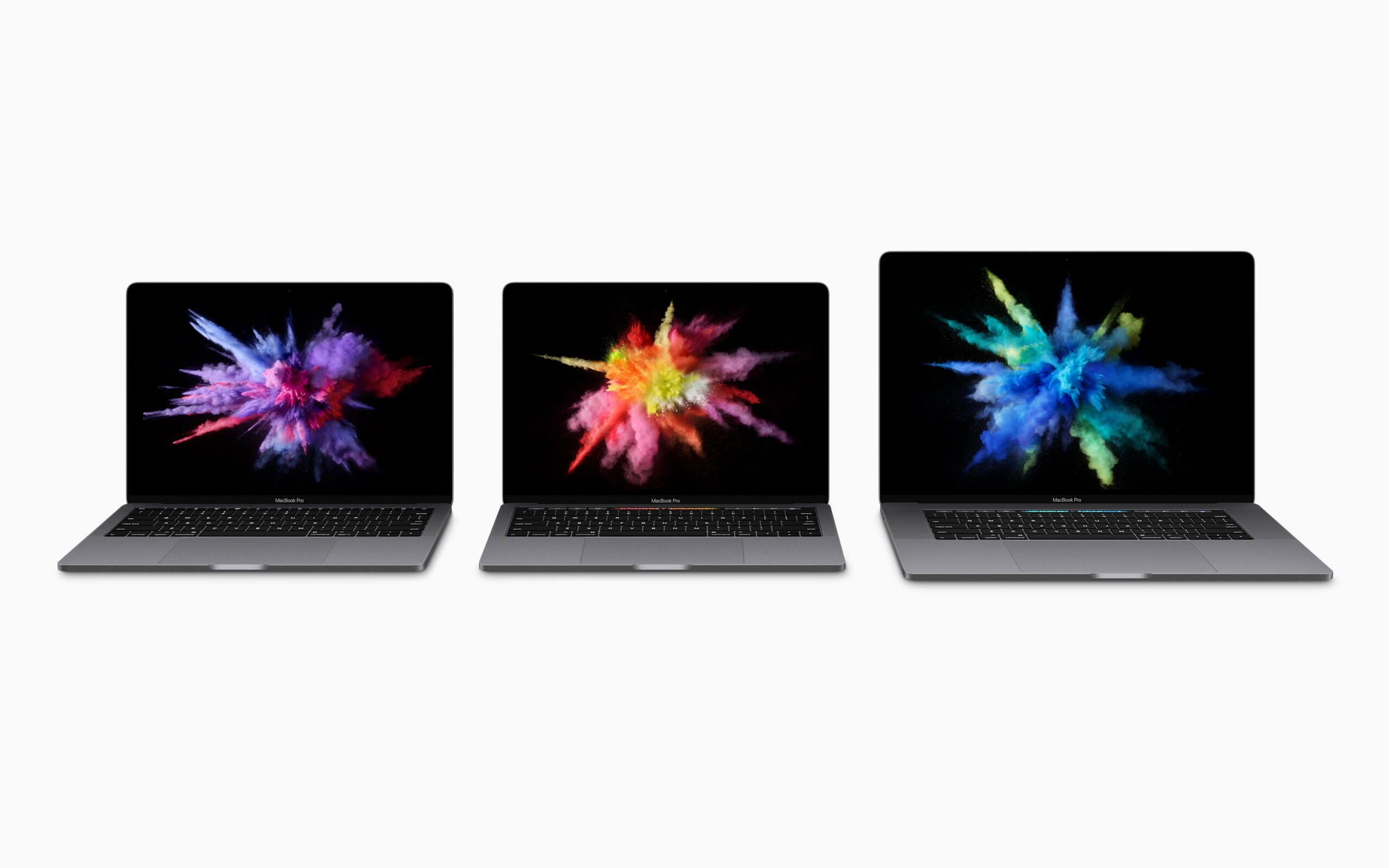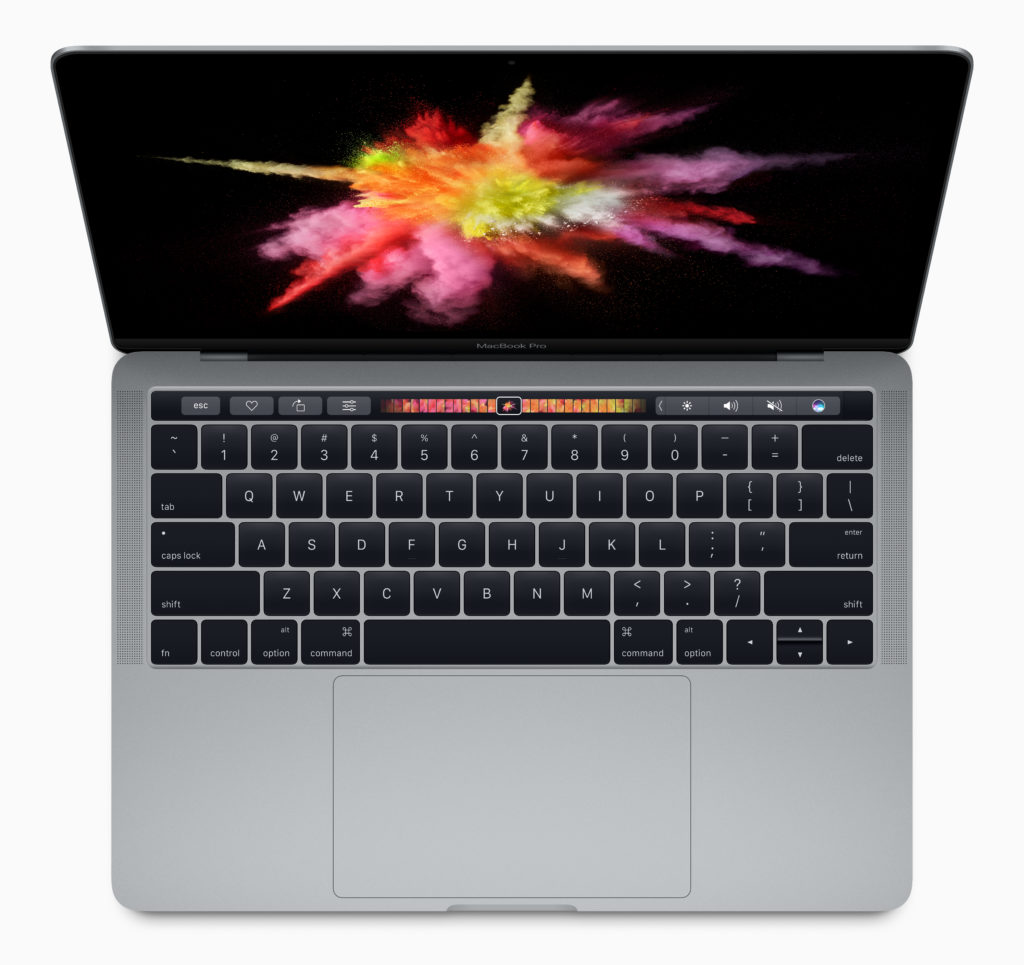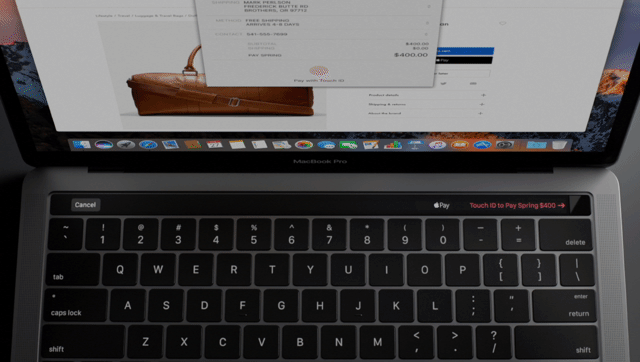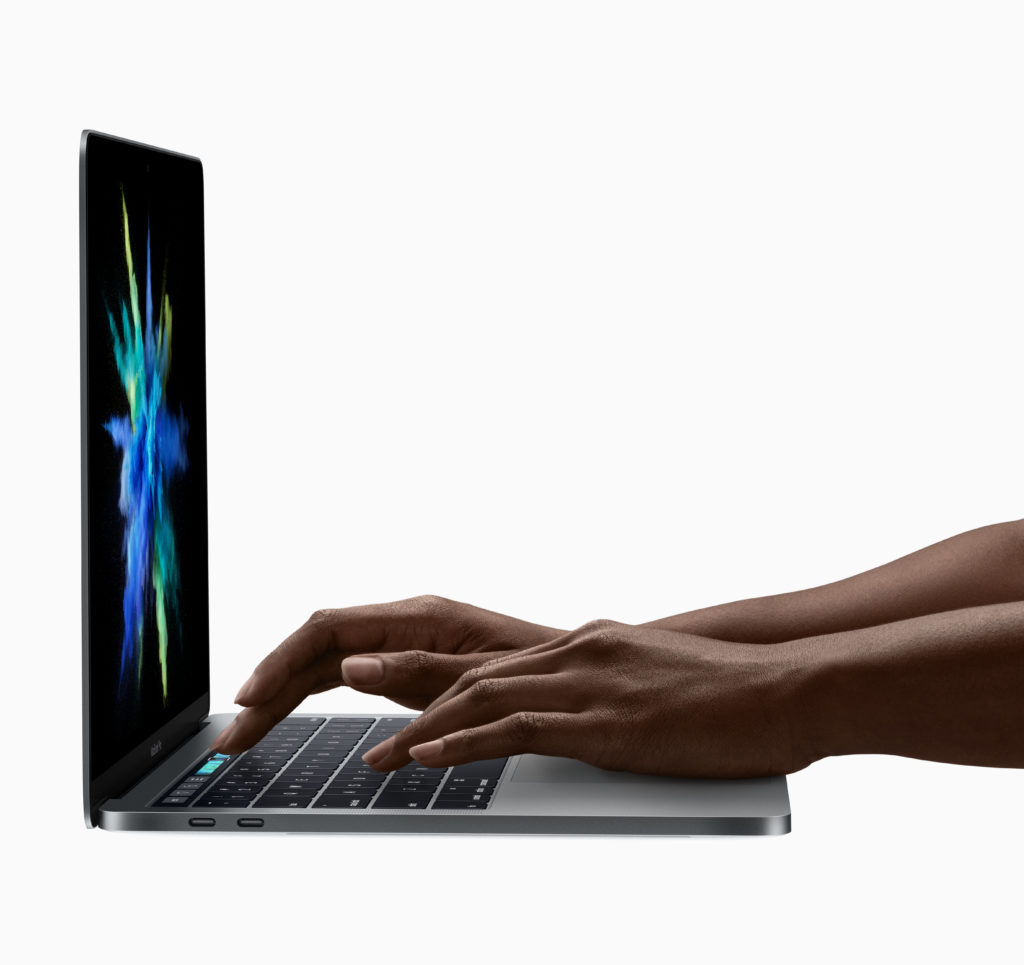Apple has updated its most powerful line of portable laptop computers – the MacBook Pro – with a thinner design, a new keyboard Touch Bar, and a feature familiar to iPhone and iPad users: Touch ID.
At a live event in San Francisco, Apple retired some models, and restructured its product line elsewhere to provide customers with varying price-points. It was Apple’s 13 and 15-inch Retina MacBook Pros that now feature as Apple’s upper-most tier of notebooks and embody the upgrades and newer design.
Also included in these models are new USB-C ports, Thunderbolt 3 capability for powerful and multi-functional external periphery connection and support for transferring 10 GB/s of data. Watch the introductory video below:
New MacBook Pro
Before looking at the overall line-up changes, let’s focus on the updated models.
The new MacBook Pro has been introduced as the “thinnest and lightest” Pro MacBook Apple has every created and is available in the standard 13-inch and 15-inch screen various and comes with an OLED “Touch Bar”. This functions as a mini Retina display screen just above the keyboard which desktop apps can build functionality into.
Apple, of course, demonstrated some potential functionality via their own apps and showed how users could send replies, delete messages and start composing new ones in Mail via the Touch Bar. All of Apple’s native apps have Touch Bar functionality added, while third-party developers have now been invited by Apple to create their own functionality. The likes of Microsoft and Adobe have already announced updates to their products to take advantage of the Touch Bar functionality.
It’s powered by its own processor – known as the T1, which includes a secure enclave, allowing the presence of a Touch ID button which can be used to unlock the computer as well as making purchases via Apple Pay.
Elsewhere, improvements include a thinner design, a much bigger trackpad, a second generation of keyboard butterfly mechanisms, first featured on the 12-inch MacBook from a couple of years ago. The screen’s also vastly improved with a 67 percent higher contrast and wide color gamut support, which has recently been added to the iPhone 7 screens.
Speakers have also been improved with better dynamic range and bass.
Standard USB ports and HDMI ports have been removed in favor of four Thunderbolt 3-capable USB-C ports which are multi-functional. MagSafe charging connectors are also now defunct on new MacBooks as any of the USB-C ports can be used for charging. However, the 3.5mm headphone jack recently removed from the iPhone 7 does remain. Though that’s a minor concessions considering the fact iPhone users will have to buy an additional USB-C to Lightning-compatible cable if they wish to sync their iPhone with the new MacBook Pro. Will next year’s iPhones ship with USB-C cables? It’s now entirely possible.
In terms of specific stats, the 13-inch model has a 2.9 GHz dual-core Intel Core i5 processor, 8GB of memory, Intel Iris Graphics, and provides the option of either 256GB or 512GB in SSD storage. The 15-inch model provides 2.6 GHz or 2.7GHz quad-core Intel Core i7 processor, 16GB of memory, a Radeon Pro 450 or 455, and the same storage options.
Pricing for these starts at $1,799 for the base 13-inch model, and $2,399 for a standard 15-inch model – they’re available in either the familiar silver or a new Space Gray. Upgrades to CPU, GPU and storage are also available.
Entry Level
Interestingly, Apple also announced an entry-level new MacBook Pro would be available. It will come in a 13-inch model, have a lower-end processor, reduced graphics capability and no Touch Bar (meaning no Touch ID either). Essentially, it will be almost the same as the previous MacBook Pro but with the new, thinner design.
This model will cost $1,499 and be available from October 31. The higher-end models will ship from late November and are currently showing shipping times of 3-4 weeks from ordering after starting out at around 2-3 weeks.
MacBook Air
Not forgetting its range of lower-specced but uber-thin MacBook Airs, Apple made changes here too. As rumored, they killed off the 11-inch model.
This means the cheapest MacBook currently available is the 13-inch MacBook Air at $999.
The current MacBook lineup now stands as: MacBook Air 13-inch, 15-inch; the 12-inch MacBook (which was not updated;) and the MacBook Pro 13-inch and 15-inch with Touch Bar and MacBook Pro 13-inch without Touch Bar.
Compare the specs and pricing of all Mac models on Apple.com




